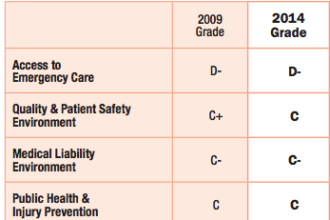 I am always a bit ambivalent about coming off as “too preachy.” I am at an even greater loss as to when it’s OK to find fault with what others say or do when it comes to patient communications or patient engagement.
I am always a bit ambivalent about coming off as “too preachy.” I am at an even greater loss as to when it’s OK to find fault with what others say or do when it comes to patient communications or patient engagement.
But sometimes I just gotta say something, and this is one of those times.
 I am always a bit ambivalent about coming off as “too preachy.” I am at an even greater loss as to when it’s OK to find fault with what others say or do when it comes to patient communications or patient engagement.
I am always a bit ambivalent about coming off as “too preachy.” I am at an even greater loss as to when it’s OK to find fault with what others say or do when it comes to patient communications or patient engagement.
But sometimes I just gotta say something, and this is one of those times.
The setting was a presentation last week at HIMSS 2014. The presenter was Chanin Wendling, the Director of eHealth at Geisinger Health System. Channing was talking about Geisinger’s often cited HIT-driven patient engagement efforts which includes their patient portal, health apps and recent foray into “Open Notes.”
What struck me was Chanin’s description of philosophical approach and communication style employed by Geisinger in the course of developing the content for theses engagement tools.
Here’s what she said.
“We tend to think in a paternalistic way: this is what the patient needs, versus thinking ‘What will work best for the patient?’ and ‘How will the patient relate to whatever we’re prescribing?’ And that’s extremely important because at the end of the day, if you can’t get the patient to help, if they don’t take their meds, if they don’t lose the weight, if they don’t do their exercises, there’s nothing you as a clinician can do. You need the patient to help you.”
Here are two things that jumped out at me from Chanin’s comments;
1. Geinsinger’s patient communication style is paternalistic and physician-directed…meaning it is the direct opposite of a patient-centered philosophical approach and communication style.
A patient-centered style begins with an understanding of the very things Chanin says Geisinger ignores – what will work best for the patient and how patients will relate to a proposed intervention.
The evidence is clear that a patient-centered approach — not a paternalistic, “we know best” approach — is linked to increased patient engagement, better outcomes, more adherent patients, lower utilization and better patient experiences.
2. Geisinger’s attitude that patients are inherently unengaged, e.g., won’t help clinicians unless told by clinicians what they need to do, is why so many heath care providers are having difficulty engaging patients at all levels of the organization, including patient portals. Think about it: 82% of U.S. adults visit their doctor at least once a year because “they” think it’s the right thing to do…and Geisinger thinks they are “not willing to help”? Are you kidding me?
The problem today is not that patients are unengaged…but that many providers aren’t very engaging. Sure 50% of patient re non-adherent…but 20% of patient non-adherence has been attributed to poor communications on the physician’s part, e.g., paternalistic, physician-directed communications. Sure less than 10% of patients visit the average patient portal in a year…but when portal contents and functionality treat one like an uncooperative child why would one expect a higher level of adoption?
The Takeaway
Unless and until provider organizations like Geisinger philosophically come to grips with the fact that patients, aka people, are often already engaged and knowledgeable, albeit in ways that are different from how providers expect…nothing is going to change.
The solution? Become more patient-centered in the way you think about, interact with and communicate with patients.
That’s my opinion. What’s yours?
(patient engagement / shutterstock)






